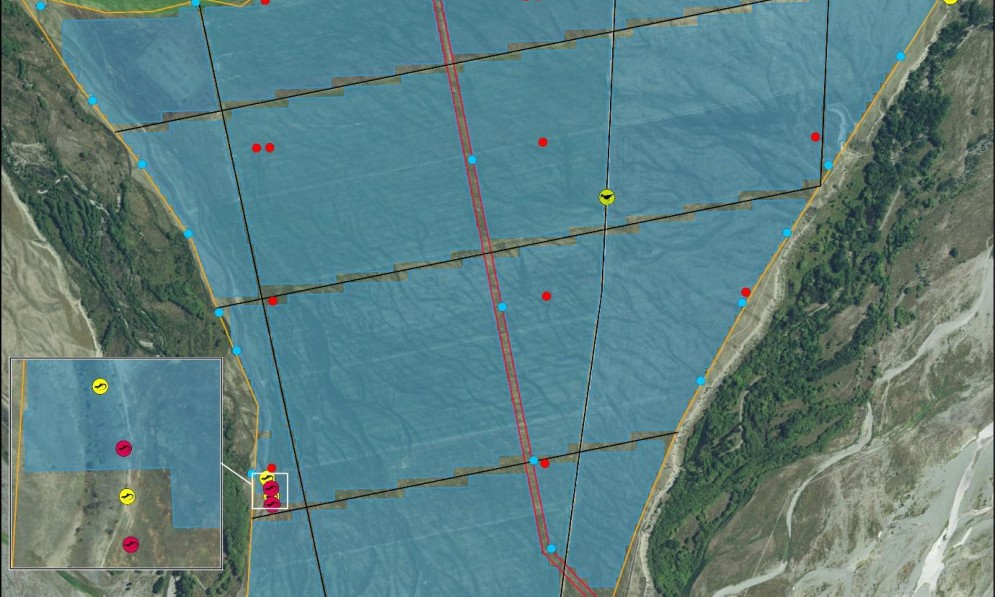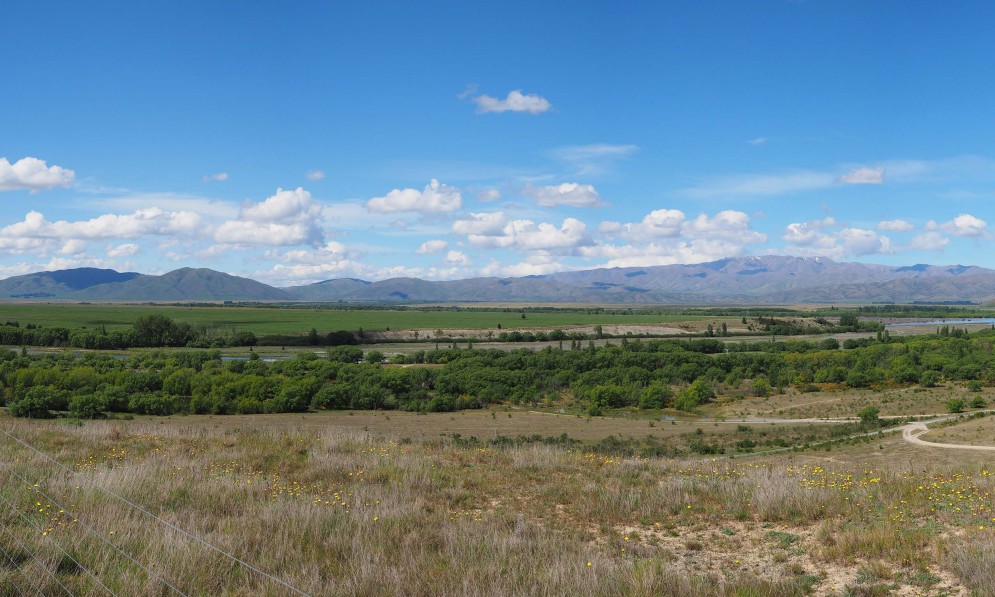Renewable energy developments need to be located in the right place and shouldn’t lead to further biodiversity loss. By Lynn Freeman
Forest & Bird magazine
A version of this story was first published in the Autumn 2024 issue of Forest & Bird magazine.
Forest & Bird is opposing plans to build what is believed would be the biggest solar farm in the country in the environmentally significant and fragile Mackenzie Basin.
Far North Solar Farms Ltd has applied to build a 420MW solar farm north of Lake Benmore, about 8km east of Twizel. The site is classified as Outstanding Natural Landscape under the district council plan.
The estimated $600 million solar farm would cover 670ha within the 968ha property and see 736,866 solar panels stationed on more than 28,000 tables.
The Point Solar Farm would be located on land degraded by farming activities but still considered important bird habitat. It is part of the Mackenzie Basin’s outstanding natural landscape.
A consent application was lodged on 29 November 2023, and submissions to Mackenzie District Council and Environment Canterbury on the consent application closed in early February. Forest & Bird made a detailed submission on the proposal.
Nicky Snoyink, our Canterbury and West Coast regional conservation manager, says the Far North Solar application for an industrial-scale solar array is inappropriate in the Mackenzie Basin Te Manahuna Outstanding Natural Landscape.
The proposed activity, Forest & Bird’s submission says, will have significant adverse effects, and the resource consent application doesn’t promote sustainable management or adequately protect native flora and fauna.
Its location, between two rivers, is significant habitat for birds, lizards, and invertebrates, including kakī black stilt. Despite being degraded, the land is likely to contain indigenous vegetation.
The Society also argues that the assessment of alternative sites was inadequate.
“Forest & Bird supports renewable energy development to reduce carbon emissions and mitigate the worst impacts from climate change,” said Nicky.
“But it’s crucial that renewable energy proposals happen in appropriate locations and in the right way.
“Otherwise, development comes at the excessively high cost of lost indigenous biodiversity or characteristics that contribute to outstanding natural landscapes like this part of the MacKenzie Country.”
Forest & Bird believes the proposed activity is not consistent with the objectives and policies of the Mackenzie District Plan, the Canterbury Regional Policy Statement, the Canterbury Land and Water Regional Plan, the National Policy Statement for Indigenous Biodiversity 2023, and the National Policy Statement for Freshwater Management 2020.
We have asked to speak to our submission when the date for resource consent hearings is set. We will fight for another victory for common sense – and for te taiao nature.
Solar panels. Image Far North Solar Farms

The location of proposed development is between Twizel and Lake Benmore. Image Far North Solar Farms
WHAT IS FOREST & BIRD DOING?
The Mackenzie District Plan is currently under review, and Forest & Bird is asking councillors to include provisions that ensure new renewable energy developments do not adversely affect landscapes, native species diversity, and habitat.
Last November, Forest & Bird opposed another large-scale solar farm in the Mackenzie Country. Independent Commissioners declined consent for a 90ha solar farm at Balmoral Station, near Tekapo, because of a loss of ecological values.
It was the first application of its type for the Mackenzie Basin, making it a crucially important precedent-setting case.
The decision has been appealed by the applicants Balmoral Station. Forest & Bird has joined the appeal so our lawyers can carry on fighting against this development.
In the North Island, our campaigns and advocacy team recently made a submission on a fast-track solar proposal at Ōpunaki, Taranaki, showing the potential adverse impacts of the
development on native pekapeka long-tailed bats and their habitat.
Forest & Bird also submitted on the government’s draft National Policy Statement for Renewable Electricity Generation.
In our 48-page submission, the Society acknowledged the national significance of electricity transmission and the need to upscale renewable electricity generation to reduce greenhouse gas emissions from non-renewable sources, such as coal and gas.
Amelia Geary
However, mass transition at scale and pace without good planning, strong regulation, and consideration of cumulative effects could be disastrous for outstanding landscapes and the biodiversity we have left.
Amelia Geary, who cowrote Forest & Bird’s submission, said: “Decision makers need to learn from past mistakes. We shouldn’t be trying to solve one environmental crisis by exacerbating another.
“The government needs to prioritise the protection and restoration of te taiao nature to ensure we address the biodiversity crisis while also meeting our climate targets.”
⏎

